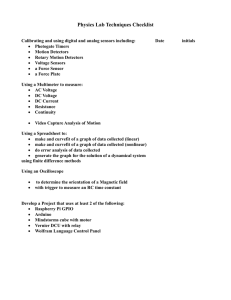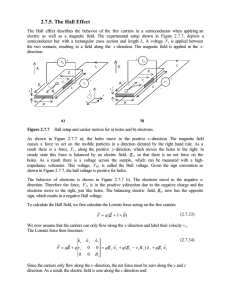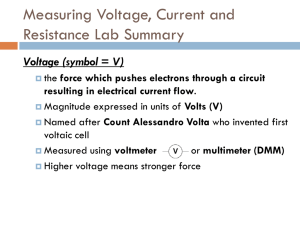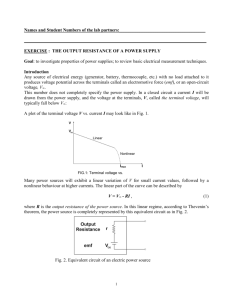Semi-Conductors Activity
advertisement
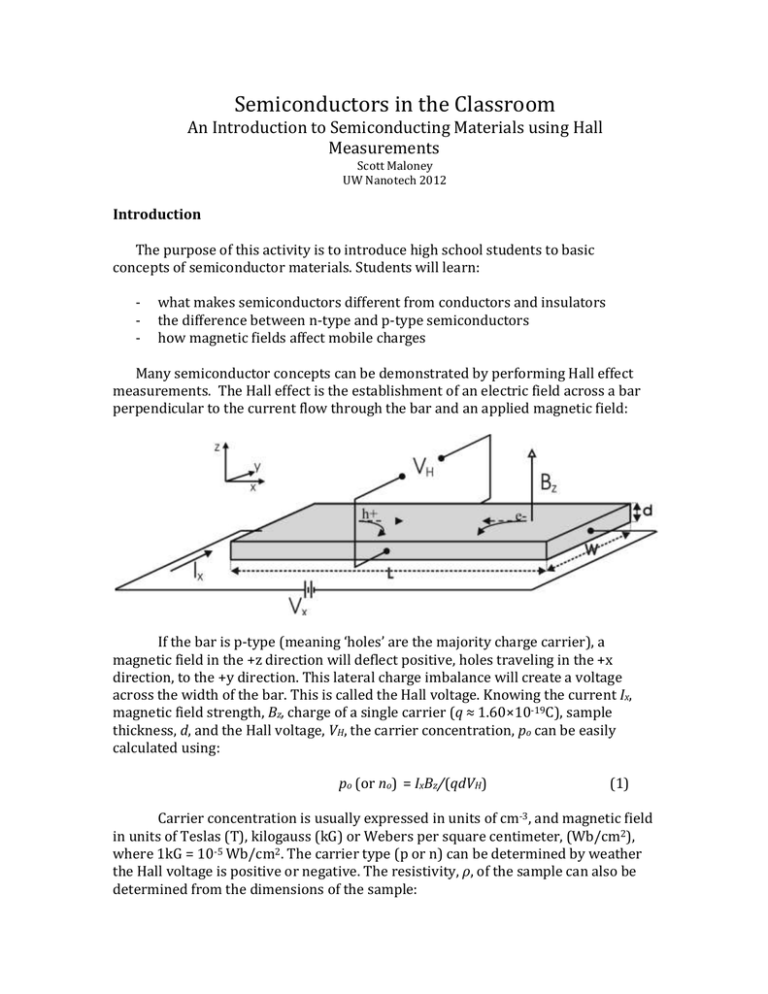
Semiconductors in the Classroom An Introduction to Semiconducting Materials using Hall Measurements Scott Maloney UW Nanotech 2012 Introduction The purpose of this activity is to introduce high school students to basic concepts of semiconductor materials. Students will learn: - what makes semiconductors different from conductors and insulators the difference between n-type and p-type semiconductors how magnetic fields affect mobile charges Many semiconductor concepts can be demonstrated by performing Hall effect measurements. The Hall effect is the establishment of an electric field across a bar perpendicular to the current flow through the bar and an applied magnetic field: If the bar is p-type (meaning ‘holes’ are the majority charge carrier), a magnetic field in the +z direction will deflect positive, holes traveling in the +x direction, to the +y direction. This lateral charge imbalance will create a voltage across the width of the bar. This is called the Hall voltage. Knowing the current Ix, magnetic field strength, Bz, charge of a single carrier (q ≈ 1.60×10-19C), sample thickness, d, and the Hall voltage, VH, the carrier concentration, po can be easily calculated using: po (or no) = IxBz/(qdVH) (1) Carrier concentration is usually expressed in units of cm-3, and magnetic field in units of Teslas (T), kilogauss (kG) or Webers per square centimeter, (Wb/cm2), where 1kG = 10-5 Wb/cm2. The carrier type (p or n) can be determined by weather the Hall voltage is positive or negative. The resistivity, ρ, of the sample can also be determined from the dimensions of the sample: ρ = WVxd/(LIx) (2) The mobility of the charge carriers is defined as the ratio of the applied electric field (i.e. the voltage from the battery) and the drift velocity of the charge carriers. For this experiment we use: μ = 1/ρqpo (3) Mobility is a very important value and is used in virtually all semiconductor analysis. Higher quality semiconductors such as silicon have a higher crystallinity and thereby a higher mobility value. The units of mobility are cm2/(Vs). Materials Wires with alligator clips Square silicon wafer ½” diameter magnet of known strength Multimeter Conductive copper tape Batteries Electrical tape Procedures (i) (ii) (iii) (iv) (v) Measure the dimensions of the sample. Check that the conductive copper tape is making a good connection with the edges of the silicon by measuring the resistance across the length. (A typical value for heavily doped n-type Si might be 50 – 200kΩ) Connect both wires to the terminals of the battery. Note which side is positive and which side is negative. Set the multimeter to read current and connect the Si piece and multimeter in series with the battery. Measure the current through the Si. Remove the multimeter from the series circuit. Carefully put the magnet underneath the Si piece between the two alligator clips. The clips are magnetic so be sure the magnet is insulated from them (use electrical tape as shown or paper). (vi) Switch the multimeter to read voltage and take a voltage reading across the width of the Si. Applications Many switches in your car use Hall switches! As a magnet is brought near a semiconductor device a Hall voltage is created and sensed.

